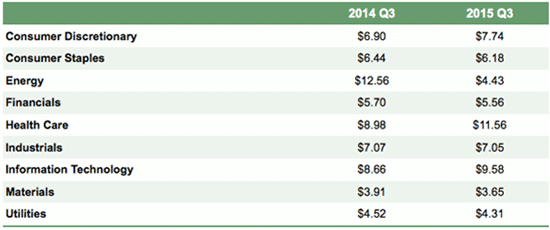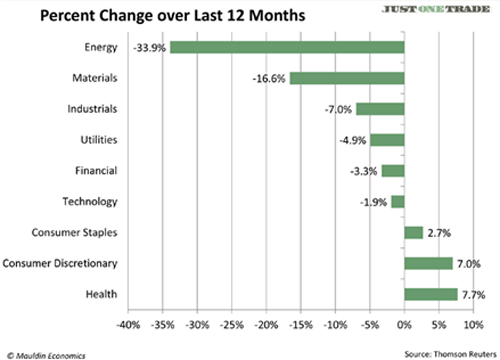“Earnings are the mother’s milk of stocks.”
—Old Wall Street adage
Alcoa is the first major company to report its quarterly results, so it often sets the tone for the rest of earnings season. If Alcoa’s results are any indication, things could get very ugly very fast.

It’s no secret that commodity prices have dropped, but the impact on corporate profits is worse than Wall Street expects.
Alcoa reported earnings well below Wall Street’s already-lowered expectations of 7 cents per share on $5.57 billion in revenue; much lower than the 13 cents per share on a $5.65 billion forecast.
Alcoa shares got hit hard on that big miss, and while nobody likes losing money, it is a painful reminder that nothing goes up forever.
In the last 15 years, we’ve seen two painful bear markets that temporarily wiped out investors’ capital: $5 trillion during the dot-com bust and $7 trillion in the financial crisis of 2008.
The stock market goes up and the stock market goes down, but one thing that doesn’t change is the hunt for companies that are still growing their earnings.
If you can identify those companies… you will make money.
The earnings of the 500 stocks that make up the S&P 500 peaked in the third quarter of 2014 and have fallen since then. However, that doesn’t mean profits are falling everywhere.

Six out of the nine broad sector categories have seen their profits fall. Profits of energy companies (no surprise) have dropped the most, followed by Consumer Staples, Financials, Industrials, Materials, and Utilities.
However, the profits of Health Care (+28.7%), Consumer Discretionary (+12.1%), and Information Technology (+10.6%) are up during the same period.
More importantly, the stocks in those sectors that are growing their profits also delivered the best performance. As the chart below shows, Health Care and Consumer Discretionary were the two strongest-performing sectors.

The moral of the story is, of course, that identifying the sectors with the strongest-growing profits is more important than the bull versus bear market debate.
So what’s the earnings outlook today?
The S&P 500 is now trading at 17 times trailing 12-month earnings based on the consensus year-end earnings estimate of $111.62.
Those earnings estimates, however, have been steadily declining—from $137.19 in March 2014 to $111.62 today.

What about 2016? The average estimate for the S&P 500 is $131.46, which implies a 17.5% increase in corporate profits over the next year.
Of course, the actual earnings number will be different—perhaps a bit higher or perhaps even lower. But regardless of what the actual 2016 earnings end up being, there will certainly be sector winners and sector losers.
Our challenge is to make sure you stay away from the sector losers and concentrate on the sector winners.
Who will that be? That’s the million-dollar question, but I believe it’s NOT going to be energy and materials companies. You’ve been warned.

Tony Sagami
30-year market expert Tony Sagami leads the Yield Shark and Rational Bear advisories at Mauldin Economics. To learn more about Yield Shark and how it helps you maximize dividend income, click here. To learn more about Rational Bear and how you can use it to benefit from falling stocks and sectors, click here.

